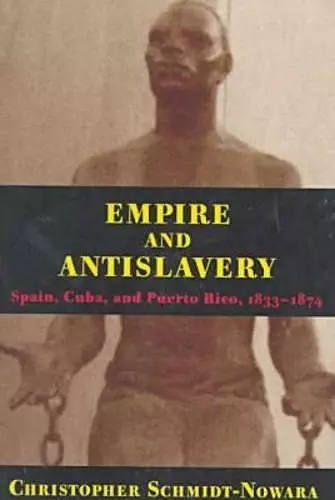Empire and Antislavery
Spain, Cuba and Puerto Rico, 1833-74
Christopher Schmidt-Nowara author
Format:Paperback
Publisher:University of Pittsburgh Press
Published:30th Apr '99
Currently unavailable, our supplier has not provided us a restock date

In 1872, there were more than 300,000 slaves in Cuba and Puerto Rico. Though the Spanish government has passed a law for gradual abolition in 1870, slaveowners, particularly in Cuba, clung tenaciously to their slaves as unfree labour was at the core of the colonial economies. Moreover, the Spanish bourgeoisie was deeply implicated in colonial slavery as Spain was the last European power to abolish the slave trade and bonded labour in the Americas. Nonetheless, people throughout the Spanish empire fought to abolish slavery, including the Antillean and Spanish liberals and republicans who founded the Spanish Abolitionist Society in 1865. The Society met massive conservative resistance in Spain and the Antilles, yet ultimately forced major changes in the imperial order. This book is an extensive study of the origins of the Abolitionist Society and its role in the destruction of Cuban and Puerto Rican slavery and the reshaping of colonial politics. The author builds his narrative around three pivotal moments. The first is the decade of the 1830s when Spanish revolutionaries consolidated a new imperial order that reconciled liberal institutions in the metropolis with slavery and nonrepresentative rule in the Antilles, provoking important criticisms of slavery, racial conflict and Spanish rule from members of colonial society. The second focal point is the Liberal Union (1854-1868), a period that witnessed dramatic transformations in both the Spanish and the imperial public spheres, setting the stage for antislavery mobilization and new transatlantic political alliances. Finally, ""Empire and Antislavery"" analyzes the Abolitionist Society's challenge to colonial slavery made in the aftermath of the Spanish and Cuban revolutions of 1868. In response to the colonial insurgency and slave rebellion, the abolitionists used revolution as a tool for destroying slavery and building a new colonial pact, a strategy that reached its high point during Spain's First Republic in 1873, the year Puerto Rican slavery was abolished. Based on research in Spain, Cuba, Puerto Rico and the United States, ""Empire and Antislavery"" reconstructs how abolitionism arose as a critique of the particular structures of capitalism and colonialism in Spain and the Antilles. More generally, it tells a story central to the understanding of slavery, race and empire in the Atlantic world.
ISBN: 9780822956907
Dimensions: unknown
Weight: unknown
324 pages